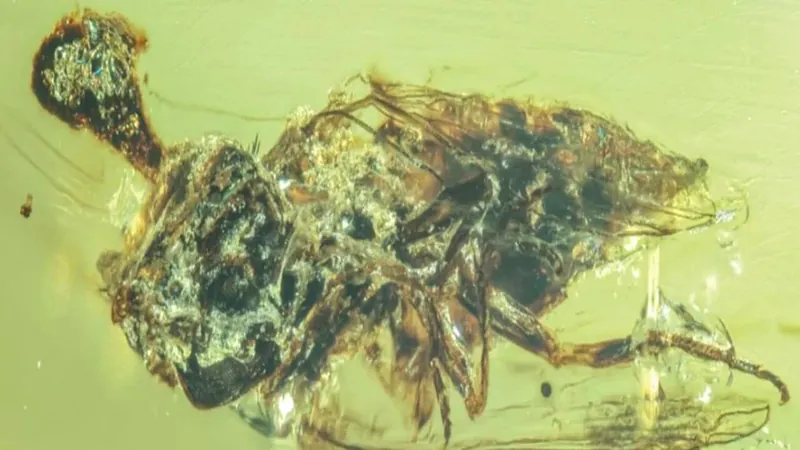
Unearthed 'Zombie' Fungi: A 99-Million-Year-Old Window into Parasitic Relationships
2025-06-30
Author: Michael
Discoveries in Amber: The Oldest Evidence of Fungi-Insect Interactions
In a groundbreaking find, researchers from the Chinese Academy of Sciences have stumbled upon two fossilized species of parasitic fungi trapped in 99-million-year-old amber. This astonishing discovery not only unveils the earliest evidence of the intricate relationship between fungi and insects, but it also hints at the complex narratives of evolution during the Cretaceous period.
Meet the Ancient Fungi: Paleoophiocordyceps
The newly identified species, Paleoophiocordyceps gerontoformicae, boasts delicate fungal stalks emerging from an ant pupa, while Paleoophiocordyceps ironomyiae features a striking phallus-like fruiting body sprouting from a fly's head. As Dr. Wang Bo, a key researcher in the study, explains, these ancient specimens dramatically enhance our understanding of the co-evolution of fungi and insects, particularly as fungal structures are notoriously fragile and rare in the fossil record.
A Glimpse into Evolutionary Host Shifts
Paleoentomologist Edmund Jarzembowski emphasizes the significance of these fungi's ability to adapt to two distinct insect hosts—a true fly and an ant—nearly 100 million years ago. This early host-switching behavior is instrumental in the evolution of the Ophiocordyceps genus, facilitating its diversification alongside various insect species.
Zombies of the Fungal World: How They Functioned Then and Now
Modern Ophiocordyceps species are infamous ‘zombie fungi’ known for their sinister ability to infect insects and control their behavior. They effectively hijack their hosts' nervous systems, compelling them to climb high before meeting their demise, thus allowing the fungi to release spores. This cunning strategy likely dates back to ancient times, as evidenced by these remarkable fossils.
Pushing Back Time: New Insights into Fungal Evolution
Utilizing advanced techniques like micro-CT scanning and genetic analysis of 120 modern Ophiocordyceps species, researchers now estimate that this intriguing genus diverged approximately 130 million years ago—pushing back previous timelines by nearly 30 million years. This study posits that the diversification of fungi paralleled that of their insect hosts during a crucial evolutionary period.
Amber's Role in Unraveling Ancient Ecology
Amber’s remarkable preservation qualities provide an invaluable glimpse into ancient ecological interactions, making these specimens some of the earliest records of ‘zombie’ fungi. This extraordinary discovery deepens our comprehension of fungal evolution and reveals the complex parasitic dynamics between fungi and insects that stretch back millions of years.









 Brasil (PT)
Brasil (PT)
 Canada (EN)
Canada (EN)
 Chile (ES)
Chile (ES)
 Česko (CS)
Česko (CS)
 대한민국 (KO)
대한민국 (KO)
 España (ES)
España (ES)
 France (FR)
France (FR)
 Hong Kong (EN)
Hong Kong (EN)
 Italia (IT)
Italia (IT)
 日本 (JA)
日本 (JA)
 Magyarország (HU)
Magyarország (HU)
 Norge (NO)
Norge (NO)
 Polska (PL)
Polska (PL)
 Schweiz (DE)
Schweiz (DE)
 Singapore (EN)
Singapore (EN)
 Sverige (SV)
Sverige (SV)
 Suomi (FI)
Suomi (FI)
 Türkiye (TR)
Türkiye (TR)
 الإمارات العربية المتحدة (AR)
الإمارات العربية المتحدة (AR)